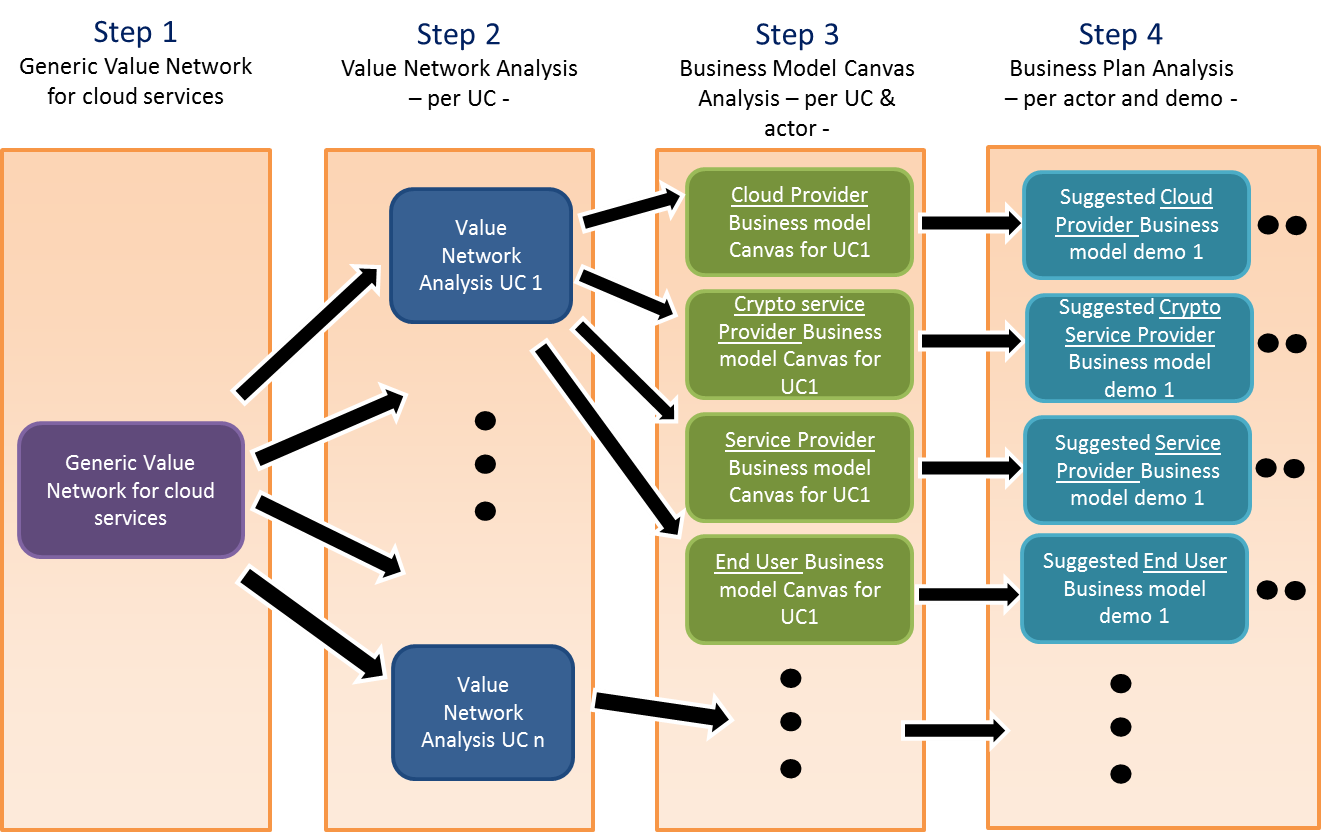D3.5 Business and Governance Model for Cryptographically Secured Services
Contributing Partners
ETRA, ATOS, FCSR, IRT, LISPA, MPL, XITRUST, IBM
Executive Summary
The present document compiles the work carried out in T3.3 business and governance models after two years and a half of the start of the project, as an extension of the work reported in D3.4 Progress report on business and governance models.
It begins with an analysis of state of the art business models in cloud computing with special focus on challenges and opportunities brought by the use of crypto tools, which has been extended from the previous report D3.4 to include some specific information on the cloud security: trends, predictions from industry and finally opportunities and evolutions.
Then, we show the analysis of the business models that could arise in the demonstrators of the project by the use of the PRISMACLOUD toolbox. Four steps must be carried out for the complete analysis, as depicted in the figure below.

Figure 1: Overall methodology for analysing business models
The starting point for building business models is the generic value network for cloud computing services defined in [1], which describes the main contributions by all involved business actors for a certain product/service to be delivered to its current and prospective customers. Value network analysis is considered to be well-suited for understanding the exchange of goods, money and information flows in Internet-based ecosystems.
Then, the PRISMACLOUD use cases are detailed with a complete business analysis identifying roles, actors, value proposition, revenue streams, cost streams and other relevant indicators. After that, the Value network analysis is created for each one of them.
A Business model canvas is filled in in each of the areas of the project, that is, Smart Cities, eHealth and eGovernment, to better describe and design the business model. The eHealth scenario is described for each of the services implemented, since several partners are involved and they all describe concrete particularities that require different analysis, while the Smart Cities and eGovernment are presented in a grouped manner.
New contents are added to this document with regards to the previous deliverable D3.4: we explore new areas that can take benefit from the services and tools provided from PRISMACLOUD: energy efficiency, insurance domain, or even an extension of the current eGovernment pilot, as an exercise of how the PRISMACLOUD architecture can be transferable to some different contexts.
As a conclusion, we highlight the links between this task of business and governance models and the exploitation of the project results, moreover the last activities of this task will be reported once the final market analysis is finished and the PRISMACLOUD products can be defined as commercial results of the project.
